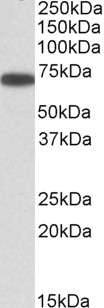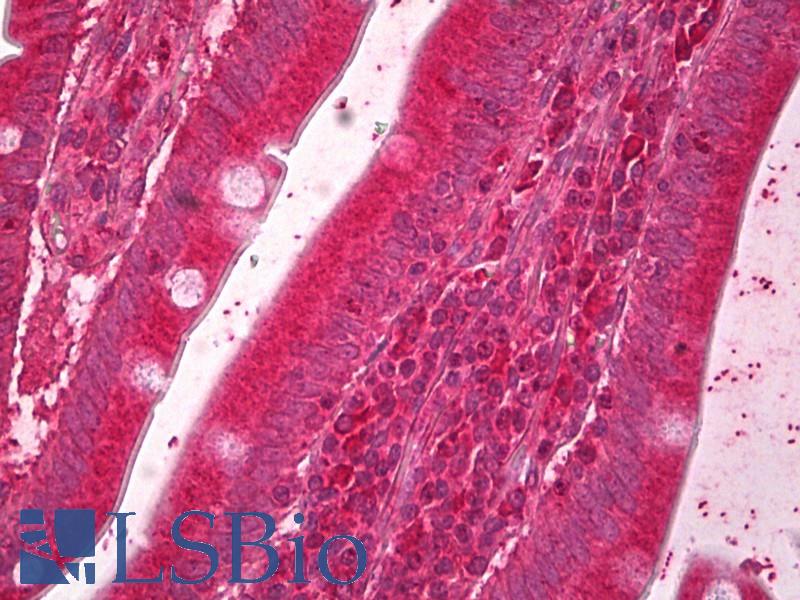Formulation Supplied at 0.5 mg/ml in Tris saline, 0.02% sodium azide, pH7.3 with 0.5% bovine serum albumin.
| |
Unit Size 100 µg | |
Storage Instructions Aliquot and store at -20°C. Minimize freezing and thawing. | |
Synonym / Alias Names oxidoreductin-1-L-alpha| endoplasmic oxidoreductin-1-like protein| ERO1-like protein alpha| ERO1-L-alpha| ERO1-L| ERO1-alpha| ERO1-like (S. cerevisiae)|ERO1L | |
Usage Summary Additional validation: This antibody has been successfully used in the following paper: Sikorski et al. (2018) PMID: 30377371. | |
Accession ID NP_055399.1 | |
Blocking Peptide EBP10882 | |
Immunogen Peptide with sequence C-QSDEVPDGIKSASY, from the internal region of the protein sequence according to NP_055399.1. | |
Peptide Sequence C-QSDEVPDGIKSASY | |
Purification Method Purified from goat serum by ammonium sulphate precipitation followed by antigen affinity chromatography using the immunizing peptide. | |
Shipping Instructions Refrigerated | |
Predicted Species Human, Mouse, Rat, Dog, Pig, Cow | |
Reactive Species Human | |
Human Gene ID 30001 | |
Product Grade  | |
IHC Results Paraffin embedded Human Small Intestine. Recommended concentration: 5µg/ml. | |
ELISA Detection Limit Antibody detection limit dilution 1:32000. | |
Western Blot Approx 70kDa band observed in lysates of cell lines A431, HeLa, Jurkat (calculated MW of 54.4kDa according to NP_055399.1). The observed molecular weight corresponds to the glycosylated form. Recommended concentration: 0.1-0.3µg/ml. Primary incubation was 1 hour. | |
Application Type Pep-ELISA, WB, IHC |
Goat Anti-ERO1-like (aa105-118) Antibody
$423.00
| SKU | Unit Size | Price |
|---|---|---|
Select a unit size:
Selected References [{"pmid": 30377371, "intro": "This antibody has been successfully used in the following paper:", "title": "A high-throughput pipeline for validation of antibodies", "author": "Krzysztof Sikorski, Adi Mehta, Marit Inngjerdingen, Flourina Thakor, Simon Kling, Tomas Kalina, Tuula A. Nyman, Maria Ekman Stensland, Wei Zhou, Gustavo A. De Souza, Lars Holden, Jan Stuchly, Markus Templin and Fridtjof Lund-Johansen", "journal": "Nat Methods. 2018 Nov;15(11):909-912"}] |


